Traditional workflow automation follows rigid, predefined logic. An email arrives, data gets extracted, and a spreadsheet updates. That works until your use case requires understanding context, making judgment calls, or adapting to unexpected inputs.
Modern LLM-based automation changes this equation. AI agents can now reason through workflows, search databases, call APIs, and adjust their approach based on what they find. This flexibility comes from function calling, which allows LLMs to fetch data from online sources and take action through APIs as needed.
For workflow automation with LLMs to work reliably, you need platforms that support:
- Multi-model flexibility: Switch between GPT-4, Claude, Gemini, or open-source models based on your needs
- Context preservation: Maintain conversation history and state across multi-step workflows
- Tool orchestration: Enable agents to discover, select, and execute the right tools for each task
- Error handling: Catch and recover from API failures, rate limits, and unexpected responses
The Model Context Protocol standardizes how AI applications communicate with external services like databases, APIs, and tools. Think of MCP as the wiring and switchboard between your AI model and its data sources—it determines what information flows to the model and when. Tools that support MCP make it dramatically easier to build agents that can work across multiple systems without custom integration code for each one.
The 7 Best Free Workflow Automation Platforms for LLM Developers
Let's examine the leading platforms available to developers building LLM-powered applications. We've focused on tools offering genuine free tiers and strong AI integration capabilities.
1. n8n - Open Source Powerhouse
n8n stands out as a free and source-available workflow automation tool that developers can self-host or run in the cloud.
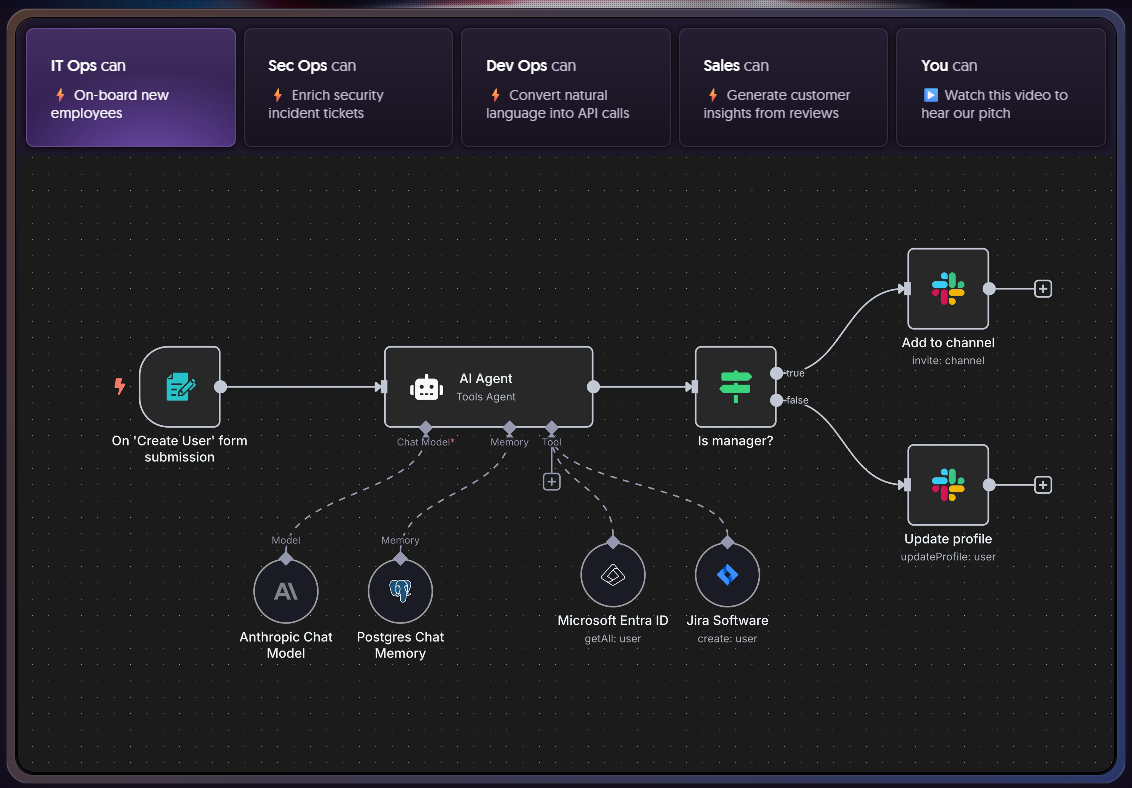
Key Features for LLM Development:
- Build multi-step AI agents and LLM automations using a powerful node system
- Self-hosting option for complete data control and unlimited workflow executions
- Integrates with OpenAI, Claude, Gemini, and other LLM providers through native nodes
Pricing Structure:
- Free tier: Self-hosted with unlimited executions
- Cloud free tier: Limited workflow executions
- Execution-based pricing: Charges per workflow execution, not per step
Pros:
- Advanced error handling and debugging tools help maintain stability
- Developer-first environment with JavaScript and Python code execution inside workflows
- 1,000+ integrations plus HTTP request nodes for any API
Cons:
- Steeper learning curve than visual alternatives
- Node-based interface requires understanding of automation concepts
- Setup and maintenance needed for self-hosting
2. Klavis AI - MCP Infrastructure Specialist
Klavis AI brings a unique approach to workflow automation by focusing specifically on Model Context Protocol integration, making it particularly relevant for developers building LLM applications with standardized tool access.
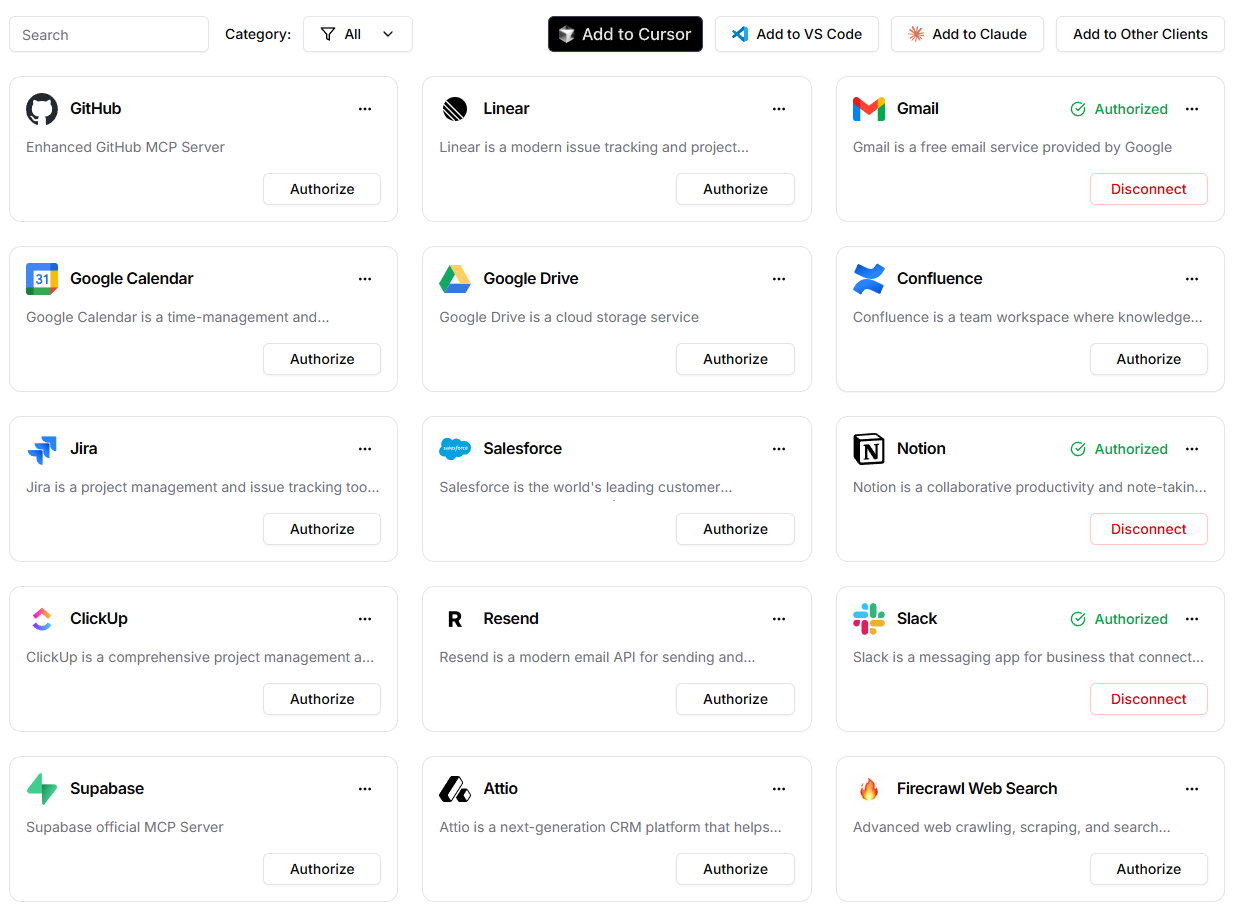
Key Features for LLM Development:
- 50+ production-ready MCP servers with built-in OAuth for services like GitHub, Linear, Gmail, Notion, Slack, Salesforce, and more
- Strata progressive discovery system that guides AI agents through thousands of tools instead of overwhelming them
- +13.4% higher pass@1 rate compared to standalone MCP servers in benchmarks
- SDK integration in Python and TypeScript for custom applications
- Direct REST API for language-agnostic HTTP integration
MCP Server Examples: The platform provides comprehensive integrations across categories:
| Category | Services |
|---|---|
| Development | GitHub, GitLab, Linear, Jira, Confluence |
| Communication | Slack, Discord, Gmail, YouTube, Microsoft Teams, WhatsApp |
| Business | Salesforce, HubSpot, Notion, Airtable, ClickUp, Asana |
| Cloud & Storage | Google Drive, Dropbox, Box, OneDrive, Supabase |
| Data & Analytics | Postgres, Google Sheets, PostHog, Mixpanel |
| AI & Search | OpenRouter, Perplexity, Brave Search, Tavily, Exa |
Pricing Structure:
- Open Source: Core MCP server code is open source.
- Free tier: Free for 3 user accounts, 500 API calls/month
- Pro and Team: For higher limits and features
- Enterprise: Custom pricing with on-premise options
Pros:
- Purpose-built for MCP, eliminating tool calling and authentication complexity
- open source if you prefer self-hosting
- Can connect any LLM to MCP servers not locked to specific AI platforms
- Progressive tool discovery solves the context and tool overload problem for AI agents
- Comprehensive OAuth handling across services
Cons:
- Focused specifically on MCP—not a general-purpose workflow automation platform
- Requires understanding of Model Context Protocol concepts
3. Zapier - Massive Integration Library
Zapier pioneered no-code automation when it launched in 2011. While known for simplicity, the platform has evolved to support AI workflows through recent additions.
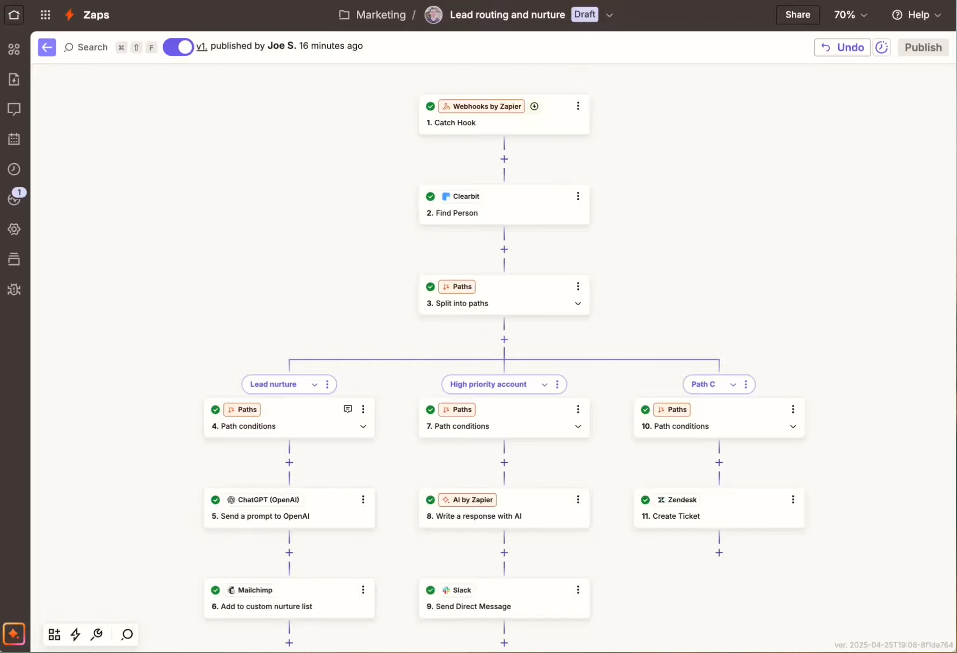
Key Features for LLM Development:
- AI-powered Zap builder and pre-built AI actions for integrating AI into tasks
- Canvas feature for mapping out complete workflows with AI assistance
- AI agents that can perform complex sequences of tasks across multiple applications
Pricing Structure:
- Free tier: Build two-step Zaps with limited functionality
- Paid plans: Task-based pricing starting at $19.99/month
- Costs can increase quickly with high-volume workflows
Pros:
- Intuitive drag-and-drop interface requires zero coding knowledge
- Largest integration library in the market
- Extensive template library for quick starts
Cons:
- Task-based pricing model means costs scale with usage
- Limited customization for complex logic and advanced workflows
- Cloud-only with no self-hosting option
4. Make (formerly Integromat) - Visual Workflow Design
Make offers a European-based automation solution that balances accessibility with technical capability through its visual canvas interface.
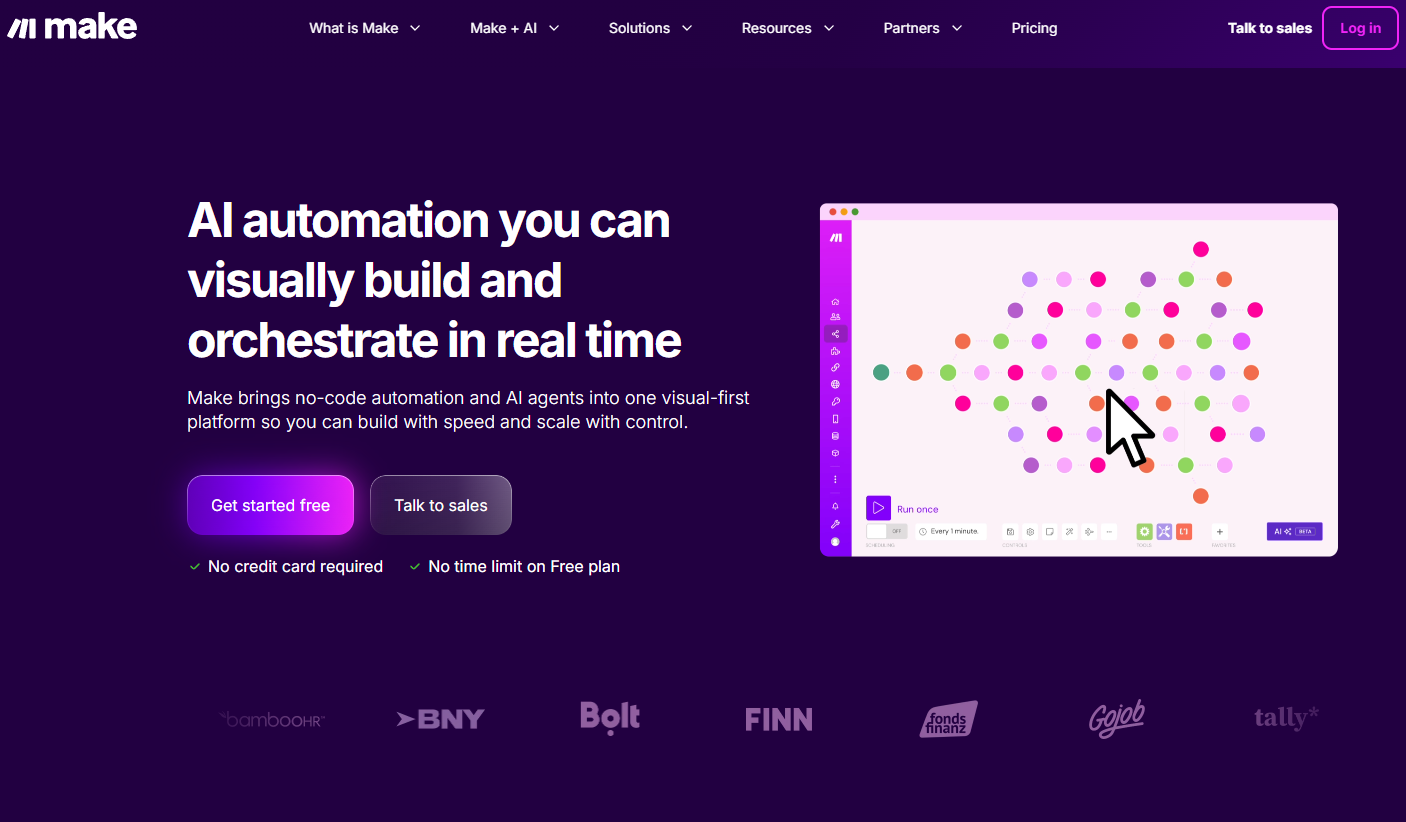
Key Features for LLM Development:
- Canvas-type visual interface for mapping complex workflows with conditional branches
- Custom modules and built-in functions for extending functionality
- Better data flow visualization compared to linear tools
Pricing Structure:
- Free tier: Generous for basic workflows
- Affordable automation tool for paid plans
- Operation-based pricing (similar to Zapier's task model)
Pros:
- Best cost/functionality balance for medium to high volumes
- Deeper integration features than Zapier for many services
- Visual debugging makes troubleshooting easier
Cons:
- Smaller app library than Zapier
- Slightly longer learning period than purely linear tools
- Limited native LLM agent features compared to specialized platforms
5. Activepieces - MIT Licensed Alternative
Activepieces emerged as an open-source, AI-first automation tool and MIT-licensed alternative to Zapier that can be self-hosted.
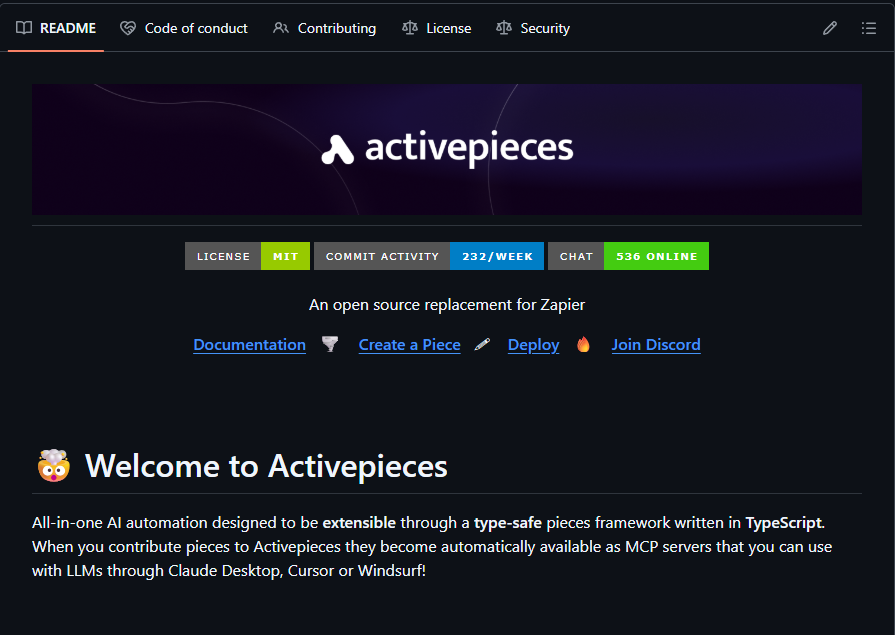
Key Features for LLM Development:
- AI-first design with emphasis on AI-powered automation
- Extensive list of integrations with active community contributions
- Self-hosting option for security and cost control
Pricing Structure:
- Free: Full platform access when self-hosted
- Cloud option: Available with usage-based pricing
Pros:
- Modern, clean interface for business users
- Growing integration library with community support
- Focus on automating marketing, sales ops, and HR workflows
Cons:
- Younger platform with smaller ecosystem
- Fewer resources and tutorials compared to established tools
- Limited advanced AI agent features
6. Windmill - Developer-First with Code
Windmill positions itself as a workflow automation platform for teams that want to treat workflows "as code" rather than purely visual designs.
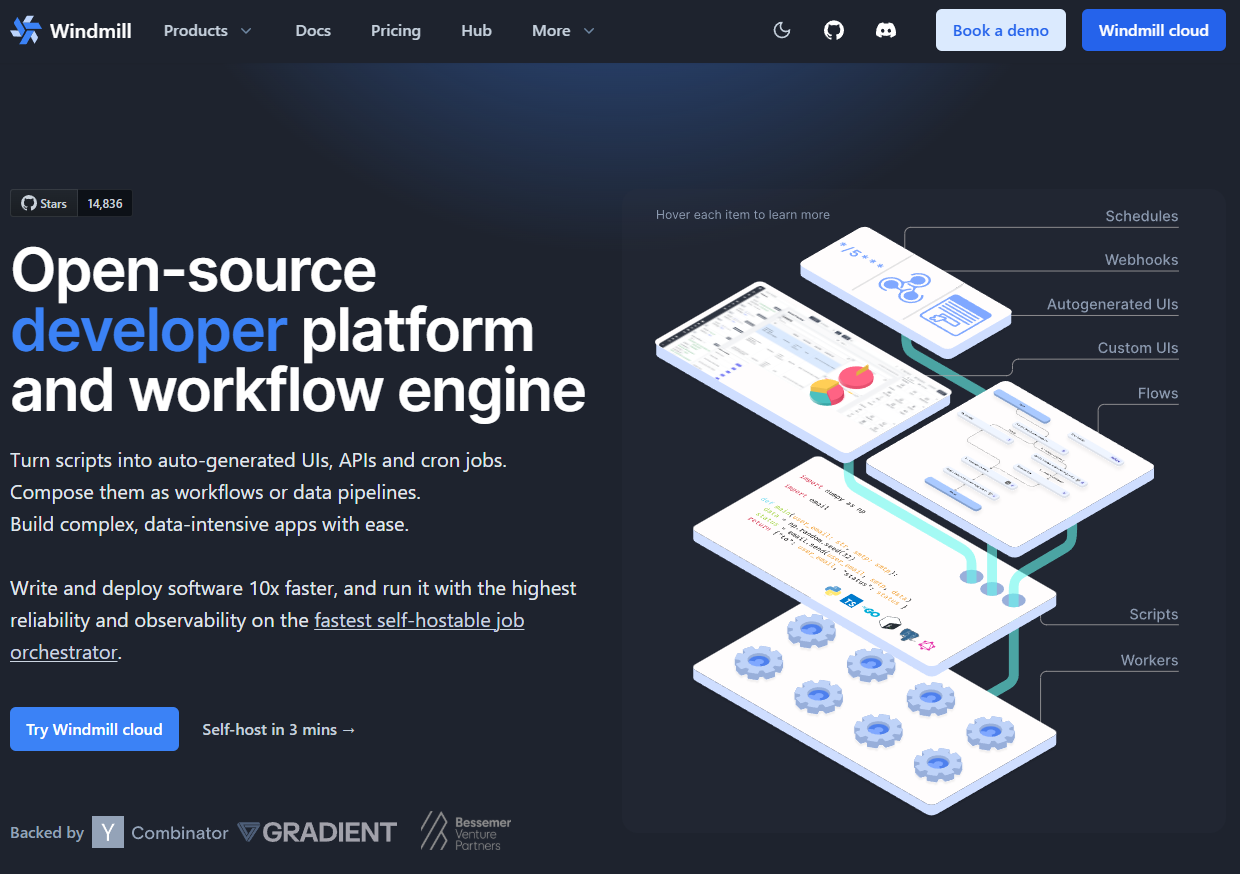
Key Features for LLM Development:
- Fully open-source with active GitHub community
- Self-host using Docker or Kubernetes
- Write workflows in Python, TypeScript, Go, or Bash
Pricing Structure:
- Free: Self-hosted deployment
- Cloud: Managed option available
Pros:
- Treat workflows as code for CI/CD integration
- Strong version control and collaboration features
- Excellent for teams with developer talent
Cons:
- Requires coding knowledge for full functionality
- Smaller pre-built integration library
- Less suited for non-technical users
7. LangChain - Developer Framework
LangChain represents a different approach: rather than a visual automation platform, it's a developer framework for building LLM applications, with LangFlow adding a visual interface.
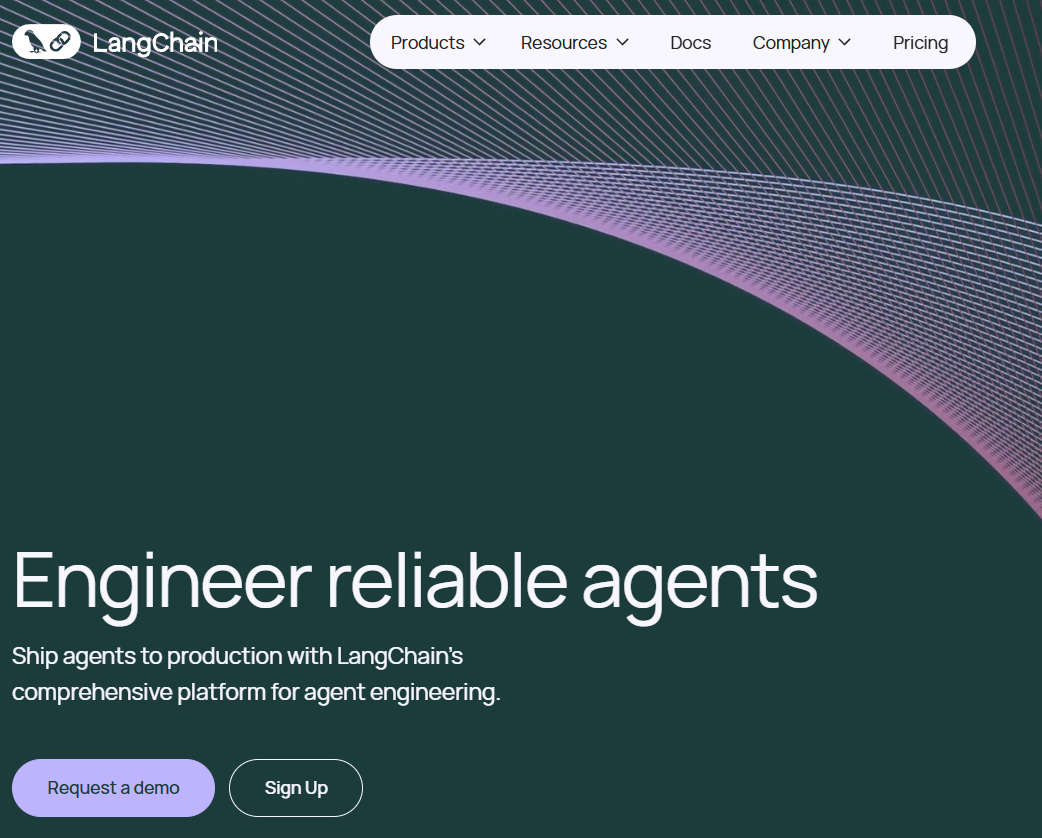
Key Features for LLM Development:
- Libraries to manage memory, reasoning, and tool use in LLM workflows
- Purpose-built for creating custom AI agents and pipelines
- Strong focus on RAG (Retrieval-Augmented Generation) and agent workflows
Pricing Structure:
- Open-source and free to use
- Costs for hosted LLMs, vector databases, and infrastructure
Pros:
- Full control over agent behavior and architecture
- Strong community and extensive documentation
- Built specifically for LLM application development
Cons:
- Requires significant coding knowledge
- Not suited for business users or quick automations
- Infrastructure costs can add up quickly
Feature Comparison Table
Here's how these platforms stack up across key features for LLM development:
| Platform | Free Tier | Self-Hosting | MCP Support | LLM Integration | Best For |
|---|---|---|---|---|---|
| n8n | ✅ Unlimited (self-hosted) | ✅ Full support | ⚠️ nodes only | ✅ Multiple LLMs | Developers wanting full control |
| Klavis AI | ✅ Open source | ✅ Self-managed | ✅ Purpose-built | ✅ Any LLM + MCP | MCP-native AI agents |
| Zapier | ⚠️ Limited (2 steps) | ❌ Cloud only | ⚠️ Via custom integration | ✅ AI actions | Non-technical users |
| Make | ⚠️ Limited (2 steps) | ❌ Cloud only | ⚠️ Via HTTP | ⚠️ Basic AI support | Visual workflow design |
| Activepieces | ✅ Full (self-hosted) | ✅ MIT licensed | ⚠️ Community | ✅ AI-first design | Open source enthusiasts |
| Windmill | ✅ Full (self-hosted) | ✅ Fast deploy | ⚠️ Custom build | ⚠️ Code-based | DevOps teams |
| LangChain | ✅ Open source | ✅ Self-managed | ⚠️ Only Framework support | ✅ Comprehensive | Custom agent development |
Choosing the Right Platform for Your LLM Application
Your choice of workflow automation platform should align with your technical capabilities, infrastructure requirements, and specific use case. Here's a decision framework based on common scenarios:
For Rapid Prototyping and MVPs
Choose Zapier or Klavis AI if:
- You need to validate an idea in hours, not days
- Your team has limited technical expertise
- You're connecting well-known SaaS applications
- Budget isn't immediately constrained
Zapier's and point-and-click interface let you build proof-of-concept AI workflows without writing code. Klavis AI's easy to use UI and API makes it even faster to get started.
For Production-Grade AI Agents
Choose n8n or Klavis AI if:
- You need full control over workflow logic and execution
- Data privacy requires self-hosting or on-premise deployment
- You're building complex, multi-step agent workflows
- Cost control matters at scale
n8n's execution-based pricing means a 10-step workflow costs the same as a 2-step workflow—critical when building sophisticated AI agents.
Klavis AI solves a different problem: if your AI agents need to work across dozens of services with proper OAuth, maintaining all those integrations yourself becomes prohibitive. Their pre-built MCP servers with authentication already handled can save weeks of development time.
Frequently Asked Questions
What's the difference between workflow automation and AI agents?
Workflow automation follows predefined logic—if X happens, do Y. AI agents use LLMs to reason about what actions to take based on context and goals. Modern platforms are blending both: structured workflows with AI decision-making at key points.
Do I need to know programming to build LLM workflows?
Not necessarily. However, familiarity with JavaScript or Python greatly enhances capabilities in platforms like n8n. For building custom agents from scratch with LangChain, programming skills are essential.
How does Model Context Protocol improve AI agent performance?
MCP standardizes how agents discover and use tools. Klavis AI's Strata implementation shows +13.4% better accuracy on benchmarks compared to presenting all tools at once.
What are the hidden costs of self-hosting vs cloud automation?
Self-hosted platforms like n8n eliminate per-task charges but require infrastructure (servers, monitoring, backups) and DevOps time for maintenance. Cloud platforms charge for usage but handle all operations. The crossover point depends on your scale: self-hosting wins for high-volume, complex workflows, while cloud makes sense for smaller teams or simpler automation.
